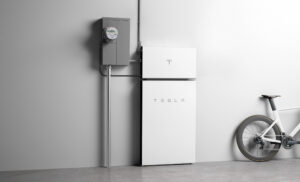
When you invest in a Tesla Powerwall, it can be combined with solar panels and stored excess electricity produced by the sun. This allows your home to utilize stored energy even when there’s no sunlight and may save additional money on its electricity bill. However, if your utility doesn’t purchase solar power at full retail rate or doesn’t offer Time of Use rates, then installing the Powerwall may not reduce any costs on your energy bills.
Tesla Powerwalls can run air conditioners for up to 1.7 hours, depending on the model and amount of power required. If your AC requires high amperage, multiple batteries may be necessary in order to provide sufficient backup.
If you need to backup your air conditioner, investing in two or more Powerwalls is the ideal solution. This will enable you to secure various circuits throughout your home – including your air conditioning unit – from one backup device.
When selecting a battery, the type and capacity are all factors to consider. A lithium ion battery like the Tesla Powerwall 2 may be more costly than traditional lead acid batteries but offers more power and an extended lifespan.
On average, homeowners can expect to pay anywhere from $12,000 to $18,000 for a Tesla Powerwall and solar system. Keep in mind that local installers typically charge more than ordering directly from Tesla.
Does the Tesla Powerwall increase my home’s value?
Yes, the Tesla Powerwall can add value to your property by cutting energy costs and providing peace of mind during power outages. Furthermore, it helps lower carbon footprint by using less electricity from the grid.
Does a Tesla Powerwall Work with My Current Air Conditioning Unit?
Yes, the Powerwall can back up your air conditioning unit if it’s currently installed. But first it needs to be charged; this may take some time so consider your budget and electrical demands when selecting the ideal battery system for you.
Can a Tesla Powerwall run my central air conditioning unit?
Yes, the Powerwall can briefly run large central air conditioning units for short periods of time but first needs to be charged. We suggest consulting an electrician before trying to start up your air conditioner using the Powerwall.
Does a Tesla Powerwall Need an Inverter?
Yes, your Powerwall requires an inverter to convert stored electricity from its battery into grid-compatible electricity. While this component can be pricey, it’s necessary for connecting your Powerwall to your home’s electrical system.
A Powerwall can also run appliances like fridges, washers and lights. While these are typically low amperage loads that can be backed up with one single Powerwall, you’ll need multiple ones in order to backup all of your household. Be sure to select the size of each Powerwall according to how big your appliances are.